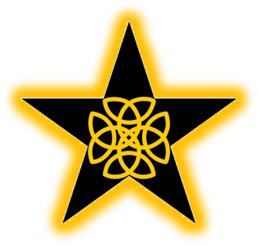The DOT is the US agency that develops, implements, and enforces federal regulations covering the safe transportation of hazardous materials shipped by motor vehicle by highway; and by air, rail, and vessel. Their regulations are codified in Title 49 of the Code of Federal Regulations (CFR). So how can a shipper legally use the International Air Transport Association’s (IATA’s) regulations when shipping by air, or the International Maritime Dangerous Goods (IMDG) Code when shipping by vessel?
US shippers can use the alternative international regulations only because the DOT gives us authorization to do so! Provided certain conditions and limitations are met, the DOT authorizes the use of the ICAO Technical Instructions (TI) and the IMDG Code at 49 CFR 171.22. (The IATA regulations incorporate the ICAO TI and include additional requirements, indicated by a pointing finger, that are required by member airlines. The “pointing finger” extras are required by the airlines to do business with them, but they are not legally enforceable by the DOT because they are above and beyond the ICAO regulations.) The DOT’s authorization to use international regulations includes the part of ground transportation to and from the air- and seaports.
Limitations
Hazardous materials regulated by the DOT but not by the international regulations – for example, combustible liquids – must be transported according to 49 CFR. Hazardous materials not regulated by the DOT, but regulated by international standards, must be in full compliance with the international standards. This may include genetically modified organisms or magnetized material shipped by air.
If a material is forbidden for transport by the DOT, it may not be transported under international regulations. Forbidden materials are indicated in several places in 49 CFR. They are:
• Named at §173.21 (Forbidden materials and packages); and
• Indicated by the word “forbidden” on the §172.101 hazmat table in Column 3 (Hazard Class or Division) or in the Quantity Limitations Column 9A (Passenger aircraft/rail) or 9B (Cargo aircraft only).
49 CFR Requirements in Effect
You can’t just shelve Title 49, forget about it, and crack open the ICAO TI or the IMDG Code. The DOT still requires adherence to many 49 CFR regulations even when using the international regulations. They include (but are not limited to):
• Emergency response information requirements (Part 172, subpart G);
• Training requirements (Part 172, subpart H);
• Security requirements (Part 172, subpart I);
• Incident Reporting requirements per §§171.15 and 171.16 including on board vessels in the navigable waters of the US; and aboard aircraft of US registry anywhere in air commerce; and
• DOT registration requirements (Part 107, subpart G).
49 CFR Regulations for Specific Materials or Packagings
At §171.23 the DOT says, “Wait! There’s more!” They specify additional requirements when using the ICAO TI or the IMDG Code for things like cylinders, aerosols, and safety devices. And don’t forget the letters “RQ” on your shipping papers or non-bulk packages if they contain a hazardous substance (see the list at 49 CFR 172.101 Appendix A) in an amount that equals or exceeds its reportable quantity in a single package.
The DOT mandates that bulk packagings must conform to the requirements of 49 CFR hazmat regulations, except for intermediate bulk containers (IBCs) and UN portable tanks used for transporting liquids or solids.
DOT Enforcement
There are no ICAO or IMDG “police” cruising air- and seaports looking to inspect your shipments. The DOT remains the enforcement agency within the US and will base their notices of violations on non-compliance with the international regulations they authorized the use of as well as with the “conditions” they still require.
The maximum civil penalty is $81,993 per violation, per day (or $191,316 for a violation causing death, serious illness, severe injury, or considerable property damage.) The minimum penalty for training is $493 per violation, per day!
Training
Function-specific training relating to the requirements of the ICAO TI and the IMDG Code should be provided to hazmat employees using the international regulations. (See 49 CFR 172.704(a)(2)(ii))
How Can STARS Help You?
We have experience and expertise with all classes of hazardous materials and transportation by rail, highway, vessel, air and pipeline.
Our experienced HAZMAT consultants will make it easy for you to comply with regulatory requirements. Our personalized solutions will minimize compliance risks and reduce your operating costs while simultaneously increasing your profits!
In addition, we also offer personalized training classes on regulatory compliance and how to safely package, ship, store, and transport hazardous materials and dangerous goods.
Contact STARS Today!
Local: 352-200-5017
Toll Free: 844-88-STARS
Email: info@starshazmat.com

